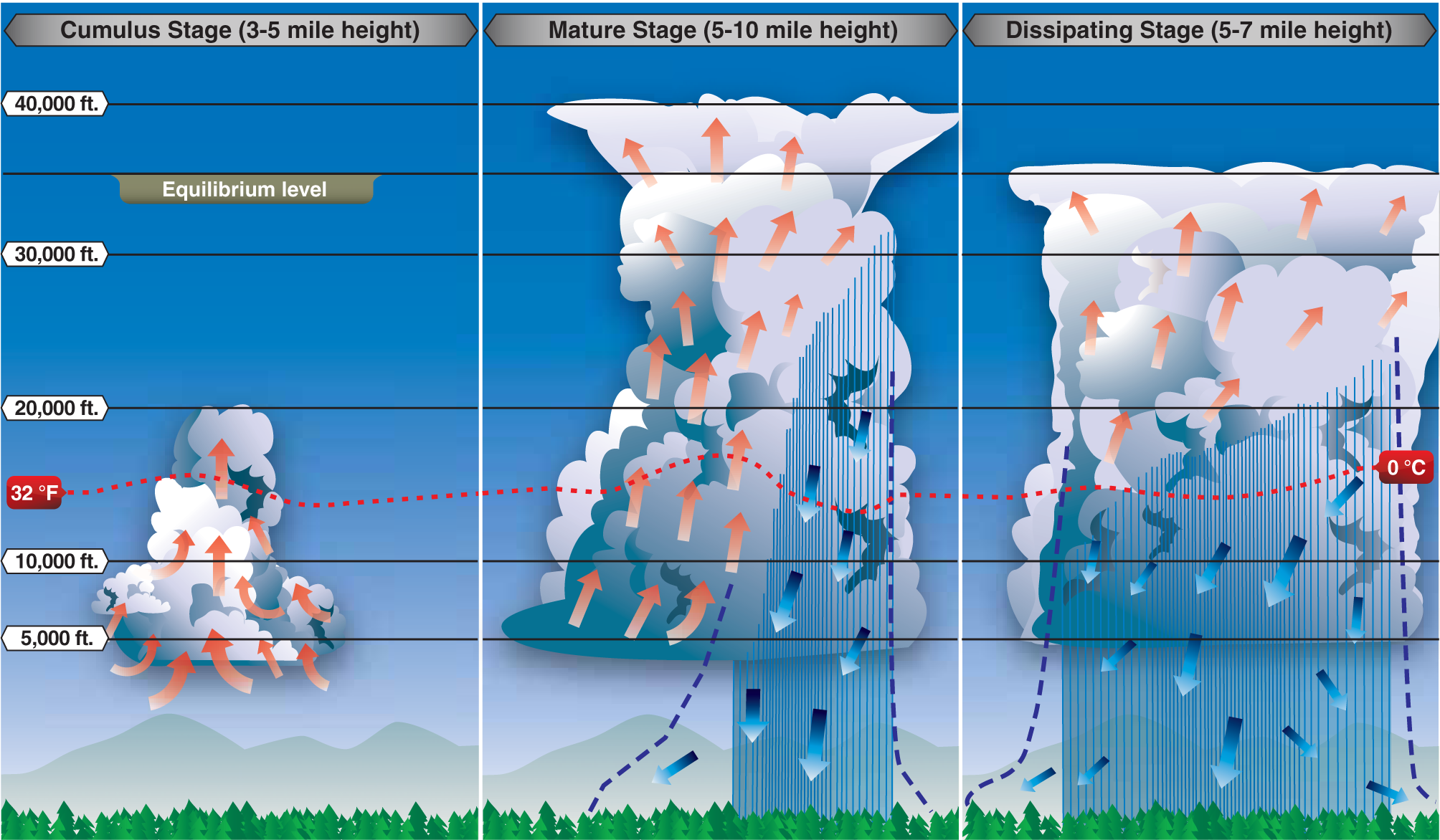For a thunderstorm to exist, you need two very basic elements: moisture and warm, rapidly rising air. This is why in the spring and summer months with the warmer conditions you tend to see an increase in thunderstorm activity. According to NOAA, at any given time across the world there are 1,800 thunderstorms occurring all of which are hazardous to flight. The average thunderstorm will last for a period of 30 minutes and spans approximately 15 miles.
A thunderstorm is a local storm produced by a cumulonimbus cloud. It is always accompanied by lightning and thunder, usually with strong gusts of wind, heavy rain, and sometimes hail. Three conditions are necessary for the formation of a thunderstorm: sufficient water vapor, an unstable lapse rate, and an initial upward boost (lifting action). The initial upward boost can be caused by heating from below, frontal lifting, or by mechanical lifting (wind blowing air upslope on a mountain).
There are three stages of a thunderstorm:
- The cumulus stage is characterized by continuous updrafts, and these updrafts create low-pressure areas.
- The mature stage is characterized by updrafts and downdrafts inside the cloud. Precipitation inside the cloud aids in the development of these downdrafts, and the start of rain from the base of the cloud signals the beginning of the mature stage. Thunderstorms reach their greatest intensity during the mature stage.
- The dissipating stage is characterized predominantly by downdrafts.

Thunderstorms that generally produce the most intense hazard to aircraft are called squall-line thunderstorms. These non-frontal, narrow bands of thunderstorms often develop ahead of a cold front. Embedded thunderstorms are those that are obscured by massive cloud layers and cannot be seen.
The majority of all FAA knowledge tests throughout your training will contain some type of question related to thunderstorms so it is important to understand this in-flight hazard. Here are a few questions that you may encounter on your private pilot knowledge test.
1. What feature is normally associated with the cumulus stage of a thunderstorm?
A—Roll cloud.
B—Continuous updraft.
C—Frequent lightning.
2. Which weather phenomenon signals the beginning of the mature stage of a thunderstorm?
A—The appearance of an anvil top.
B—Precipitation beginning to fall.
C—Maximum growth rate of the clouds.
3. What conditions are necessary for the formation of thunderstorms?
A—High humidity, lifting force, and unstable conditions.
B—High humidity, high temperature, and cumulus clouds.
C—Lifting force, moist air, and extensive cloud cover.
Leave your answers in the comments! We’ll be back Monday.




